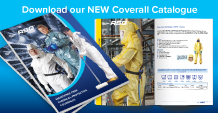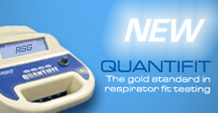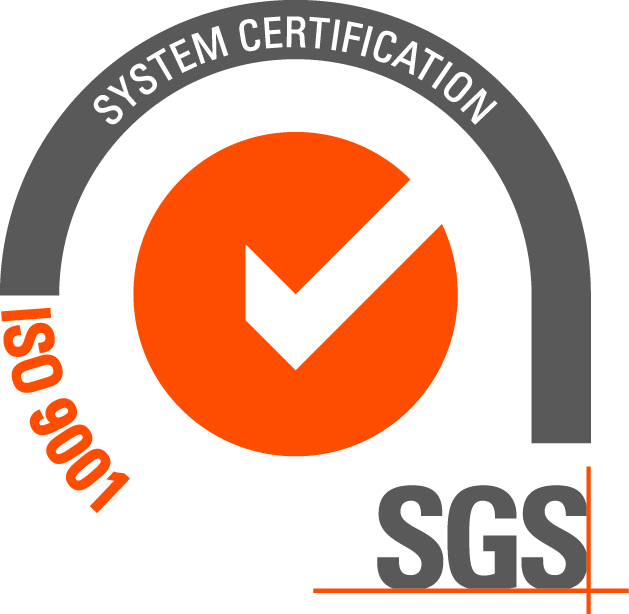Product Information

Disposable particulate respirators, tested to EN149:2001, are approved for single shift use. Their effective usage time depends on a number of factors:
- Level of contaminant
- Breathing rate
- Heat
- Humidity
- Hygiene factors
These factors vary from one workplace to the next. For example: an operative working in a very hot, dusty environment may decide to change their respirator at the end of the morning rather than use the same one all day.
The CE symbol printed on the product/ packaging informs the market that the product meets the essential requirements of the European directives relating to PPE. It could be described as a ‘passport’ to sell products within the European Union.
The CE mark is not a quality mark and does not indicate the performance of the product.
The product should meet the requirements of a relevant European Standard, e.g. EN149:2001 FFP1. This marking indicates the performance category of the product.
Purely based on the protection factor, and not taking into account other factors such as user acceptability and cost effectiveness, there is no difference in APF between disposable particulate respirators and a half mask fitted with the same specification filters.
There is a difference between the APF associated with using the same filter on a half mask and a full face mask. e.g. P3 filters on a half mask give an APF of 20 but when the same filters are fitted to a full face mask the APF is 40.
The Health and Safety Executive (HSE) has concluded that machining of MDF is no more, or less, hazardous than working with other forms of wood. In short, formaldehyde is not considered to be a problem.
The HSE has previously suggested that an FFP2 respirator could be evaluated for cutting or routing MDF in ventilated workshops eg. RSG 220 or 420 Disposable Respirators. Alternatively, you could try the RSG Powered Air & Airfed Respirators T-Air which have the added advantage of providing eye protection & head protection, depending on the model chosen.
There is no simple answer to this question as there will normally be Oxides of Carbon and Nitrogen in the mixture of exhaust gases which cannot be filtered out.
The only way to protect against all the contaminants in vehicle exhaust would be with either a supplied air system or self contained breathing apparatus (SCBA). This solution is often not practicable so a compromise solution has to be reached.
The levels at which isocyanate can be detected by smell or taste are considerably higher than the Workplace Exposure Limit (WEL) as set by the HSE. There would be no indication of smell/taste that 'breakthrough' had occurred until an exposure higher than the WEL.
As isocyanates are a potent occupational asthmagen the safe solution and HSE advice is to use an air fed system which supplies breathable quality air to the wearer rather than filtering out airborne contaminants. The RSG T-Air Pressure Systems could be considered for this type of application.
As there are so many different types of paint in common use it is very difficult to suggest one product for everything.
The main problems are vapours from the organic solvent carriers and particulates in the form of pigments and spray mist. In most cases brush or roller applying paint is less hazardous than spraying since a lesser amount of pigment and vapour will become airborne. We suggest the following filter selections for the more commonly occurring paint application groupings:
- Powder coating – particulate filters or supplied air, depending on levels of contaminant.
- Water based – particulate filters often combined with nuisance level organic vapour protection when low levels of solvent are present.
- Solvent based with good warning properties – organic vapour & particulate filters.
- 2-pack isocyanate based – a minimum of a supplied air visor.
When welding stainless steel with MIG or MMA, the welding fumes often contain particles of chromium and nickel, of which chromium is more dangerous to inhale. The RSG T-Air Powered Respirator with particle filter offers you excellent protection in this application.
TIG welding does not emit much welding fume but creates large quantities of ozone gas. Read more below under ‘When does ozone form?'
Plasma cutting and plasma welding give rise to high temperatures, which can emit damaging oxides of nitrogen.
When welding surface-treated material, a series of dangerous pollutants can be released; how dangerous depends on the type of surface treatment. When welding galvanised steel, zinc oxide particles are released. These can cause zinc ague, also known as fume fever. If you weld painted material you should be especially careful, as many paints can give off very dangerous air pollutants.
When welding galvanised steel or material painted with lead primer, we recommend that you use The RSG T-Air Powered Respirator with particle filter. This can be used in combination with an odour filter to minimise unpleasant odours.
If the material is painted with two component paint or insulated with polyurethane, you should always contact a Safety Engineer. There is a large risk that you will be exposed to isocyanates, which are very dangerous to inhale and difficult to detect. In these cases we recommend a compressed air device like T-Air Pressure.
When welding with MIG and TIG, the noble gases argon and helium are used as shielding gases. Neither argon nor helium are considered dangerous, but they can displace oxygen in unventilated areas, making the atmosphere oxygen deficient. When welding with MAG, carbon dioxide, or a mixture of carbon dioxide and a noble gas, they are used as shielding gases.
Since parts of the shielding gas can be converted into carbon monoxide when the gas reaches the air, large quantities of carbon monoxide can form around the welding arc. Carbon monoxide cannot be filtered away. If the ventilation is poor, the oxygen level must be checked.
Alloyed electrodes are common when welding with MAG. The alloys often contain manganese or silicates. This means that manganese oxide and silicates are diffused into the surrounding air when you are welding. T-Air powered respirator with particle filter usually offers sufficient protection against alloy particles.
When welding aluminium not only are particles of aluminium oxide produced but ozone gas is formed by the action of the UV radiation from the arc breaking down molecular oxygen. Ozone is also produced when welding stainless steel with TIG. Eventually ozone will be converted back to oxygen, a process that is speeded up when the ozone comes into contact with solid surfaces that act as a catalyst. Ozone cannot be filtered from the atmosphere but relies on being converted back to oxygen.
At low ozone concentrations the use of the T-Air powered respirator system with particulate filter reduces the amount of ozone reaching the welder. This is achieved by the fact that the particle filter (because of its large surface area) and the breathing tube to the welding helmet help to catalyse the conversion of ozone back to normal oxygen. At higher concentrations the inclusion of a gas filter in the T-Air respirator adds an additional large surface of carbon granules on which a further reduction of ozone takes place.
Although welding fume from normal steel is not one of the most dangerous types, it is far from good for your health. Among other things, it contains particles of iron oxide, which can cause siderosis. (chronic inflammation of the lungs).
When welding with MIG/MAG and MMA, there are heavy fume emissions, meaning that both a respirator and good ventilation in the workplace are necessary. When welding ordinary steel, The RSG T-Air Powered Respirator with particle filter is recommended.












